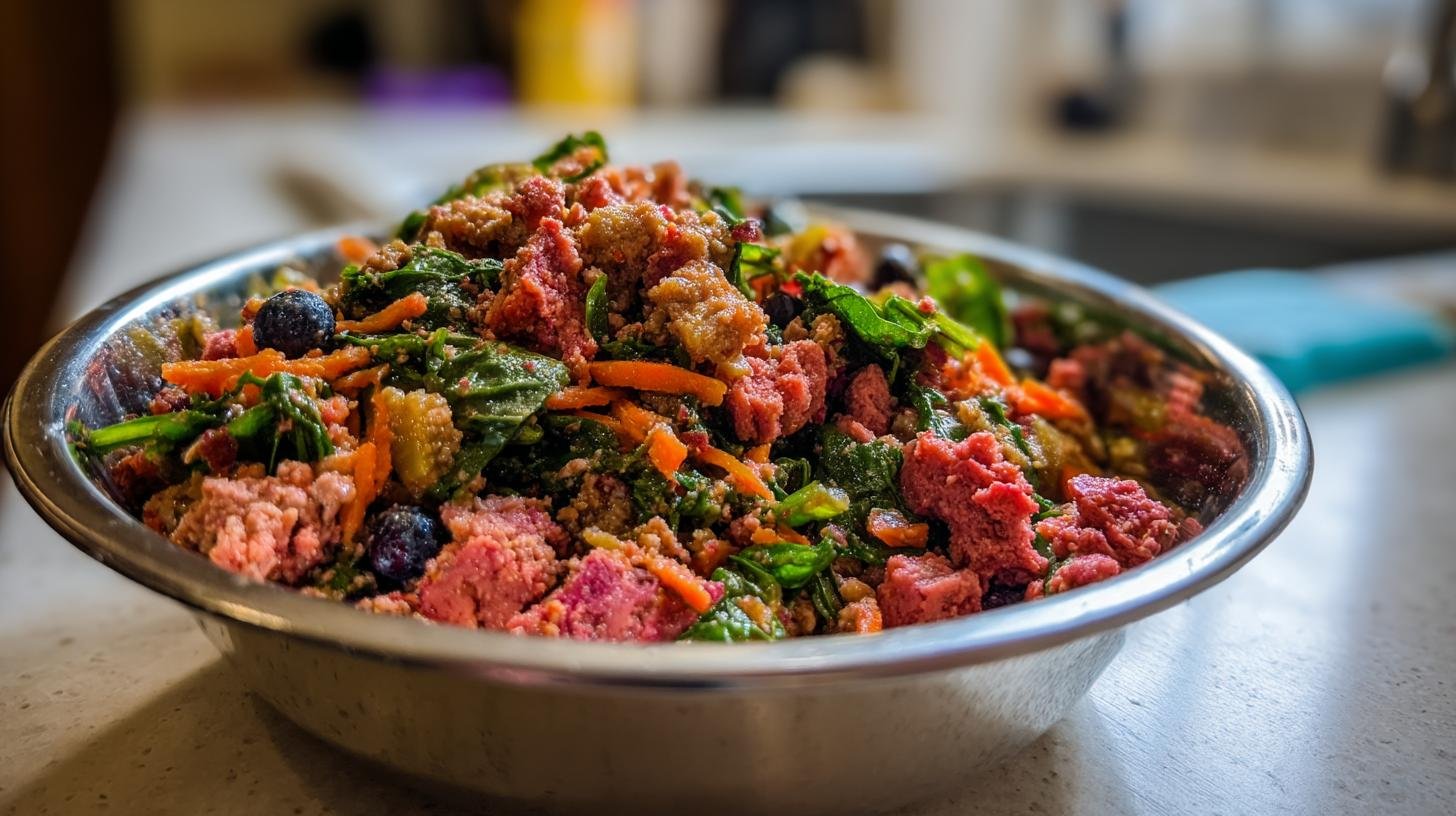When I first switched my pup Maverick to raw feeding, I was overwhelmed. There were charts, calculators, and a million opinions online. But what finally clicked for me was understanding daily raw food portions for dogs—not just eyeballing meals, but really nailing the balance. And let me tell you, once I got it right, the difference was night and day. His energy soared, his coat got shinier, and those tummy troubles? Gone.
Figuring out proper portions isn’t just about filling a bowl. It’s about giving your dog the nutrition they need to thrive—supporting their digestion, maintaining a healthy weight, and even boosting their immunity. I dove deep into vet recommendations, raw feeding groups, and scientific articles to get the full picture. I’ve learned a lot (sometimes the hard way), and I want to share it so you don’t have to start from scratch like I did. Let’s break it down together.
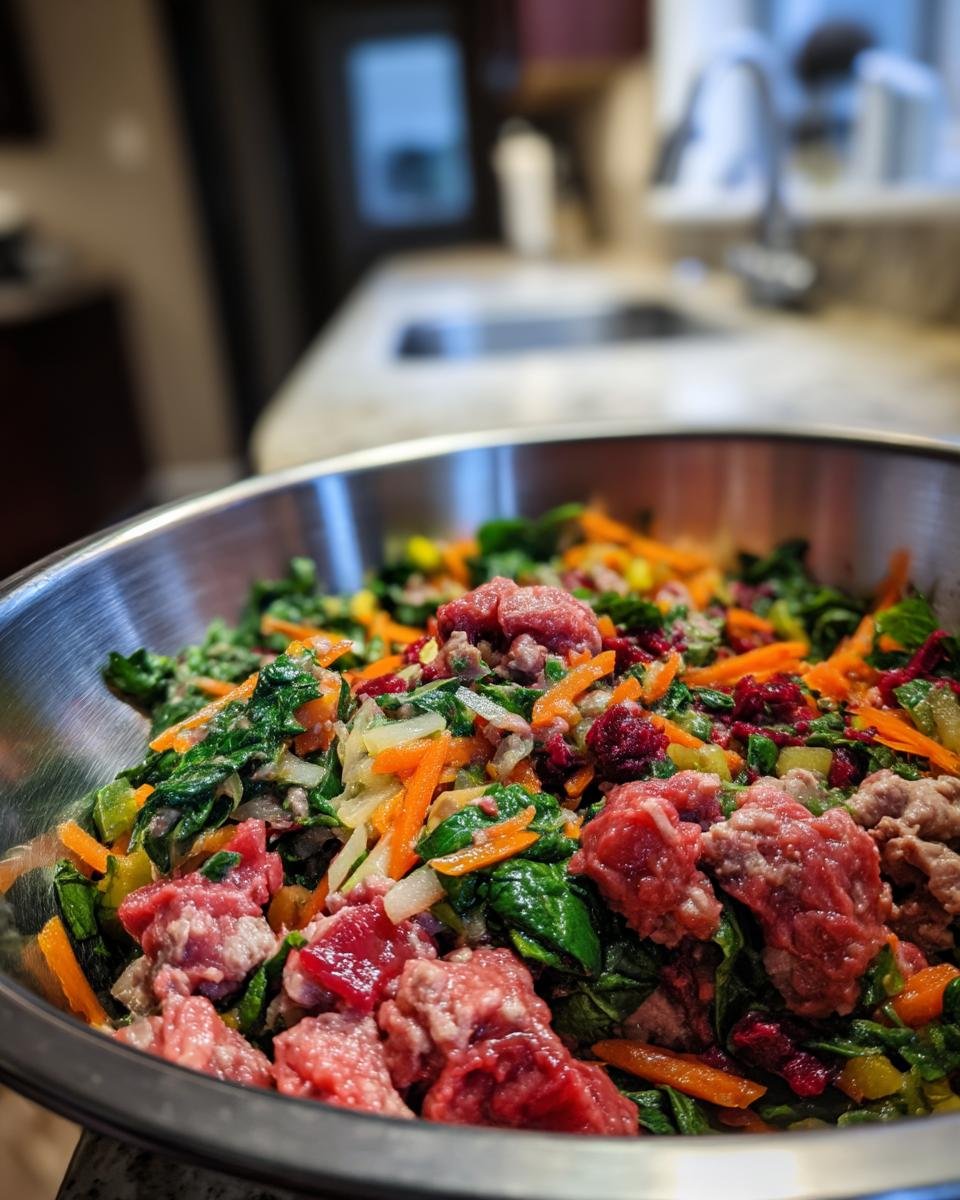
Why Daily Raw Food Portions for Dogs Matter
Getting your dog’s daily raw food portions right is where the magic really happens. It’s not just about avoiding overfeeding—though trust me, that matters too—but about creating a steady rhythm for their body. Balanced portions help maintain a healthy weight, which is huge for joints and long-term mobility. You’ll notice better energy levels too. Maverick used to nap all afternoon, but once we adjusted his portions, he was bouncing around like a puppy again.
Proper balance also supports digestion. A consistent mix of muscle meat, organs, bones, and fiber-rich veggies keeps everything moving just right. And don’t forget immunity. A well-portioned raw diet gives your dog the nutrients they need to fight off illness and stay vibrant. When portions are dialed in, you’re not just feeding your dog—you’re fueling their best life.
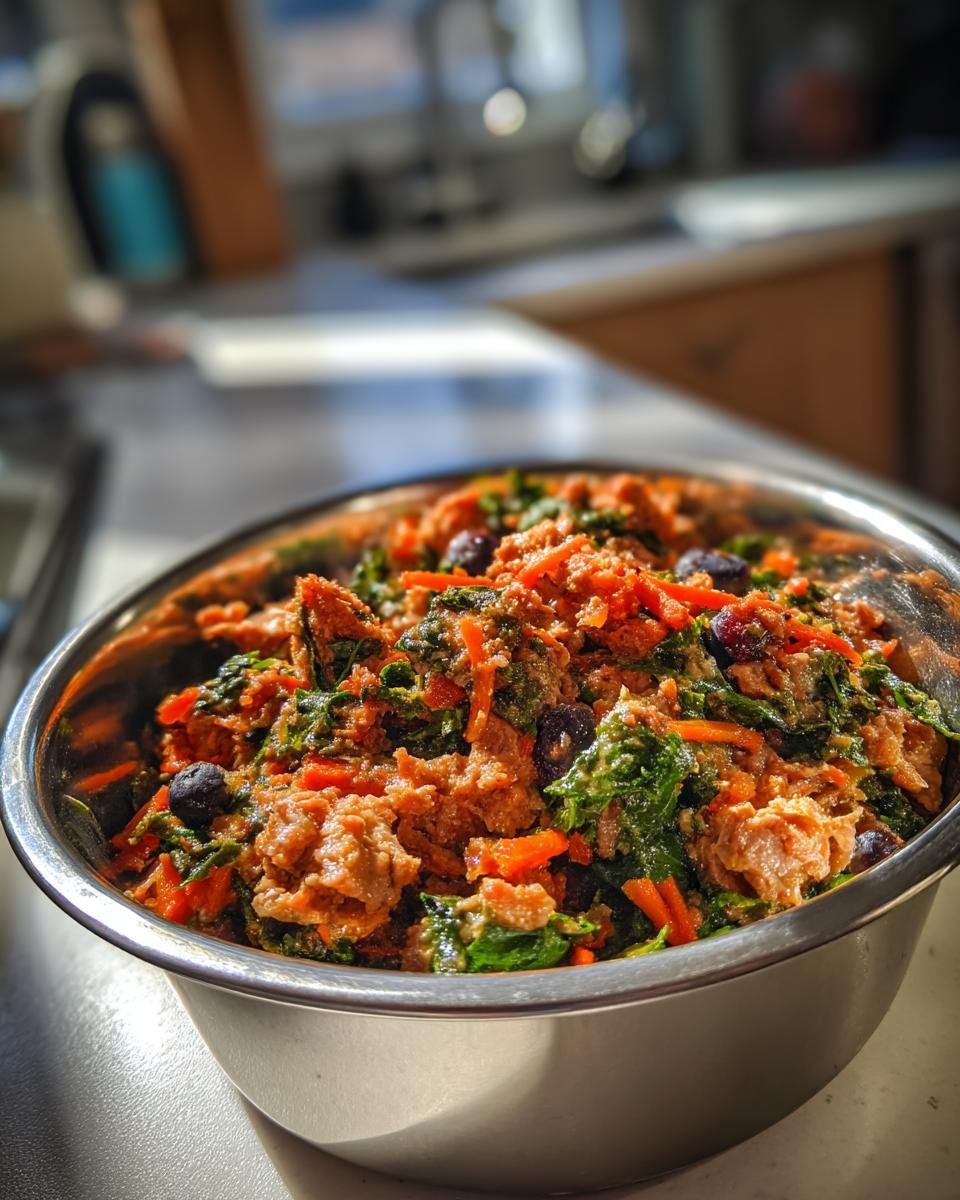
Ingredients for Calculating Daily Raw Food Portions for Dogs
Once you know how much to feed, the next step is figuring out what goes into that bowl—and this part is actually kind of fun. The base of a balanced raw diet is simple, but every ingredient plays a role. Here’s how I build Maverick’s meals, and what each portion does for his health:
- 70–80% muscle meat: This is your main protein source—think raw chicken thighs, beef chunks, turkey breast. I chop or grind it so it’s easy to mix and portion.
- 10–15% organ meat: Liver is non-negotiable for vitamins, and I rotate in kidney or spleen for variety. I dice it small—organs are rich, and too much can overwhelm their system.
- 10–15% raw bones: Ground chicken necks or turkey backs are great. They provide calcium and keep teeth clean. Never cook bones—they splinter!
- 5–10% vegetables: I blend spinach, carrots, and broccoli into a fine pulp so they’re digestible. Raw, but lightly processed.
- Up to 5% fruits: Blueberries, apples (no seeds), and bananas in moderation. I mash or finely chop them.
- 1–2 eggs per week: Whole, raw, shell and all—Maverick loves cracking them himself.
- Supplements: I add fish oil for omega-3s and a calcium powder when I’m low on bones.
Stick to the ratios and tweak as needed—every dog’s different, but this foundation keeps things balanced and nourishing.
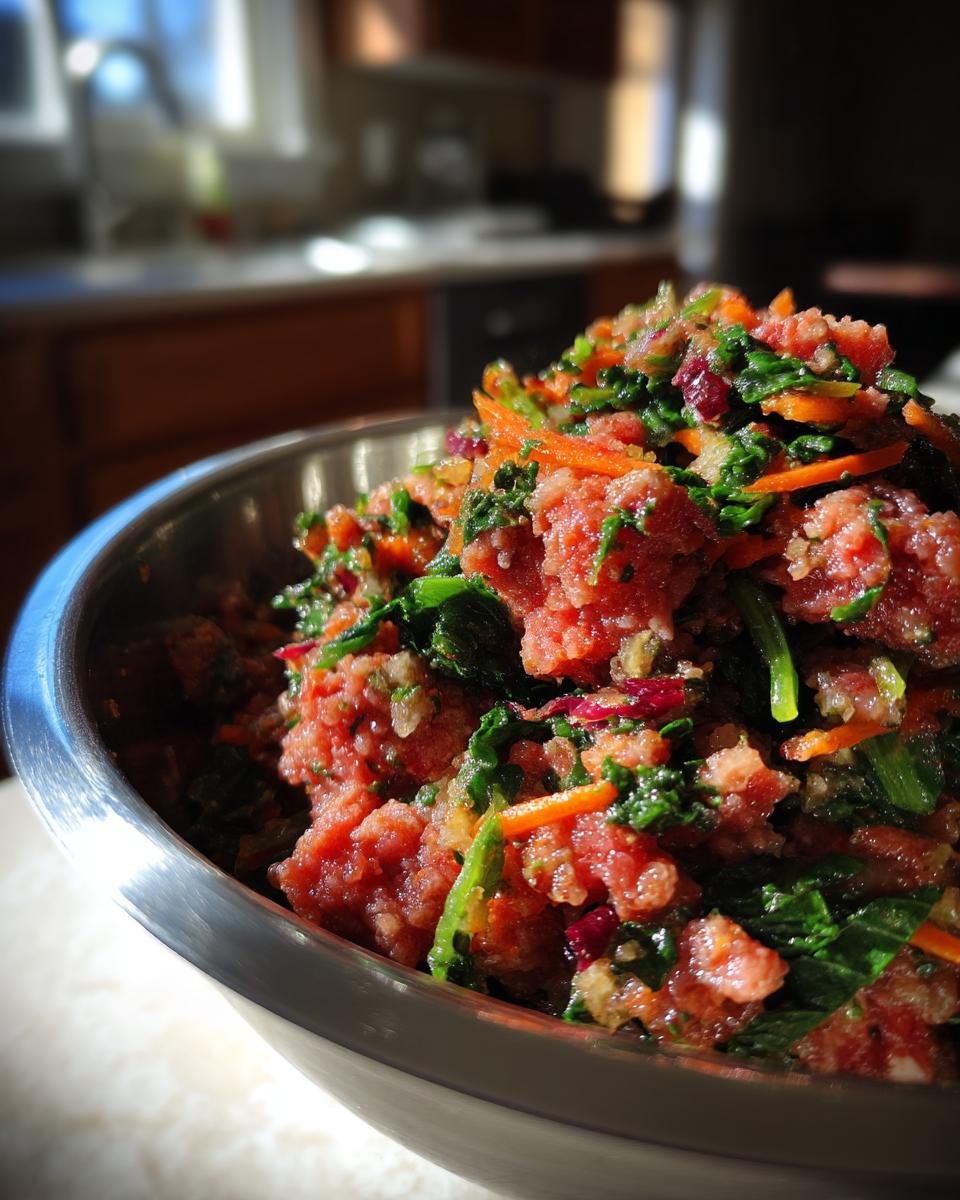
How to Prepare Daily Raw Food Portions for Dogs
Okay—so you’ve got your ratios, your ingredients are ready, and now it’s time to actually put it all together. Don’t worry, it’s not as complicated as it sounds. I like to prep Maverick’s meals once a week, portion everything out, and store them in the freezer. That way, feeding time is quick and easy every day. Here’s how I do it from start to finish.
Calculate the Right Portion Size
Start by weighing your dog. You’ll need their weight to figure out how much food they need daily. For adult dogs, the general rule is 2–3% of their body weight per day. Puppies need more—usually 5–8% because they’re growing fast and burning energy like crazy.
For example, if your adult dog weighs 50 pounds, 2% of that is 1 pound of food per day (50 x 0.02 = 1.0 lbs). If your pup is super active or still growing, bump it up closer to 3% or more. You can always adjust based on how they’re doing—watch their weight and energy levels like a hawk those first few weeks.
Mixing the Right Ratios
Once you know how much total food your dog needs, break it down into the right parts. I always start with the muscle meat since it’s the biggest chunk (70–80%). Then I add organ meat (liver + one other), raw bones, and blend in the veggies and fruit. Don’t forget your supplements—fish oil, calcium, maybe a probiotic powder if your dog’s tummy is sensitive.
Here’s my trick: I mix a giant batch in a big bowl, then scoop it into daily containers using a digital scale to make sure the portions are spot on. If your dog is a couch potato or older, lean toward the lower end of the meat range and add more veggies for fiber. Super active dogs? Keep the protein nice and high.
Safe Storage and Handling
This part is super important—raw food means raw bacteria, so cleanliness is everything. I prep on a clean surface, wash my hands constantly, and use separate cutting boards for meats. Once meals are portioned, I store them in airtight containers or freezer-safe bags.
In the fridge, portions last about 2–3 days. In the freezer, they’re good for up to three months. I take out one container the night before and thaw it in the fridge—never on the counter. And if something smells funky or your dog refuses it, toss it. Better safe than sorry!
Once you get into a rhythm, it becomes second nature. I actually kind of enjoy prep days now—it feels good knowing exactly what’s going into Maverick’s bowl.
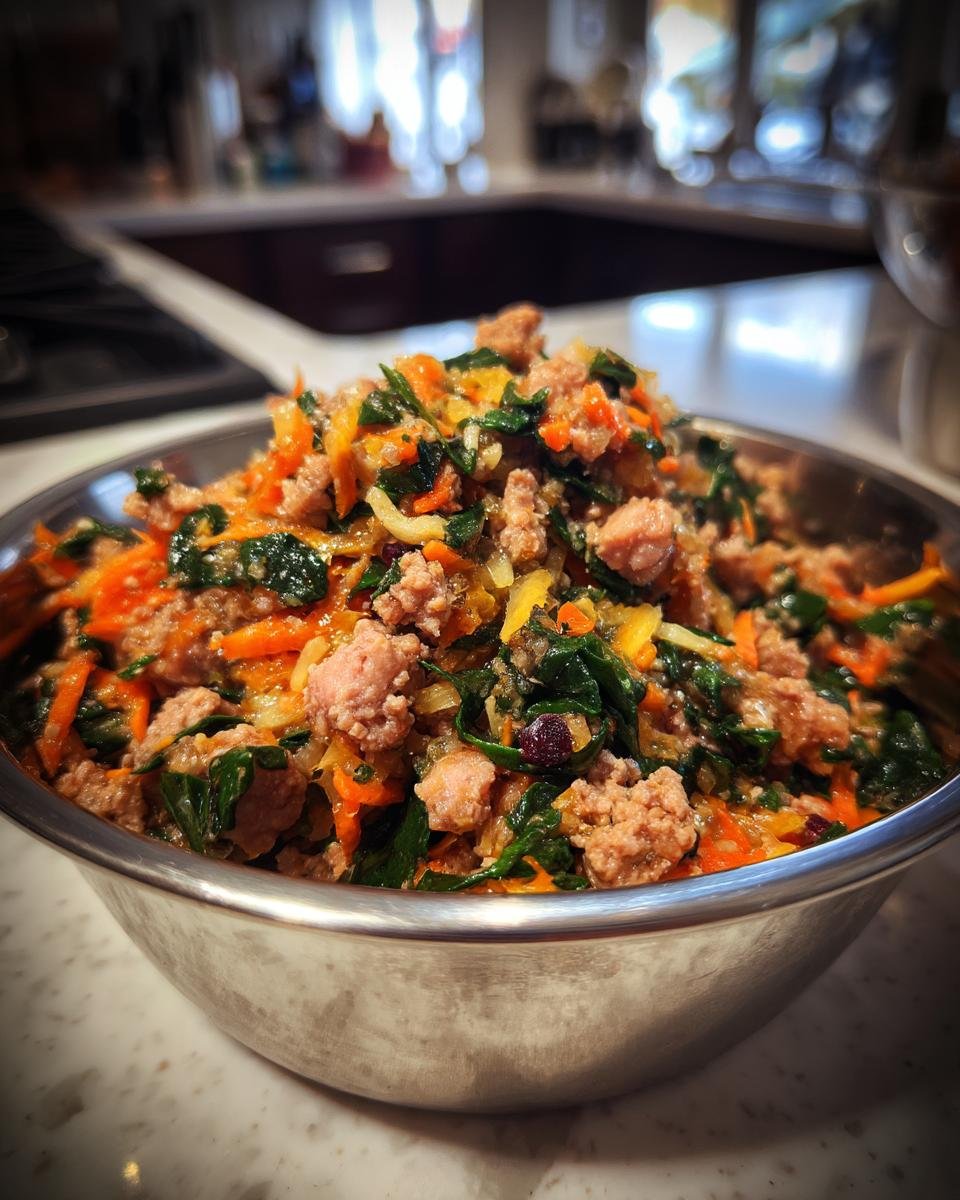
Tools You’ll Need for Daily Raw Food Portions for Dogs
You don’t need a fancy kitchen setup, but a few key tools will make prepping daily raw food portions way easier—and way safer. First up, a digital kitchen scale is a must. Eyeballing just doesn’t cut it when you’re aiming for precise percentages. Next, a good meat grinder or heavy-duty food processor helps break down tougher cuts and raw bones (especially if your dog’s on the smaller side).
I also swear by freezer-safe containers or portioned silicone molds for storage. Label them with the date and portion size to stay organized. And don’t forget a dedicated cutting board and knife—one just for raw prep to avoid cross-contamination. Once you’ve got your tools lined up, the whole process becomes smooth, safe, and honestly kind of satisfying!
Ingredient Swaps and Substitutions
Let’s be real—sometimes you run out of beef or your dog suddenly decides liver is the enemy. Don’t panic! There are great swaps you can make without throwing off the whole balance. For muscle meat, rotate between chicken, turkey, beef, pork, or even duck. Just make sure it’s fresh and raw. If your dog has a protein allergy, try novel meats like rabbit or venison.
Not into beef liver? Lamb liver or chicken liver works too—just don’t skip organs altogether; they’re nutrition powerhouses. Swap kidney for spleen if needed. For veggies, use whatever’s safe and in season—zucchini, kale, or green beans are great. Just blend them well for digestibility.
And if you’re low on bones, a calcium supplement can stand in short-term. Always adjust slowly and watch your pup for any changes. Every dog’s different, and flexibility is your best friend here!
Tips for Success with Daily Raw Food Portions for Dogs
Once you’ve got the basics down, it’s all about keeping things consistent and paying attention to your dog’s cues. I’ve learned a few tricks that make the whole process smoother—and keep Maverick healthy and happy along the way:
- Introduce new proteins slowly: Give your dog a few days to adjust to each new meat. It helps avoid tummy upsets and lets you spot any allergies early.
- Weigh your dog regularly: I check Maverick’s weight monthly to make sure we’re on track. Slight gains or losses can sneak up fast!
- Adjust with the seasons: Dogs burn more energy in winter or during active months. Scale portions up or down as needed.
- Keep a feeding journal: Jot down what proteins you’ve used and how your pup responded. It’s a lifesaver when troubleshooting.
- Trust your eyes and hands: Watch your dog’s body condition and energy levels. They’ll tell you if something’s off before any scale does.
Stick with it, tweak as you go, and soon you’ll feel like a pro. Your dog will thank you with every tail wag and happy, healthy day.
Variations of Daily Raw Food Portions for Dogs
Here’s where raw feeding gets really personal—in the best way. Not every dog needs the exact same mix, and that’s totally okay. Puppies, for example, need way more fuel than senior dogs, so I bump their portions up to 5–8% of body weight and keep protein levels high. For senior pups like my neighbor’s old lab, I go lighter on rich organs and add joint-supporting supplements like green-lipped mussel powder.
Small breeds often do better with finely ground bones and softer meats like turkey. Big, active dogs? They thrive on hearty beef and more dense muscle cuts. Dogs with allergies or sensitive tummies might benefit from a single-protein rotation—switching meats weekly helps avoid reactions and keeps things interesting.
And don’t forget probiotics! A sprinkle of plain kefir or a canine probiotic powder can be a game-changer for digestion. Tailor the plan, and your dog will thrive.
Common Questions About Daily Raw Food Portions for Dogs
I get asked these all the time—especially when folks are just starting out. So let’s clear up a few of the most common daily raw food questions I hear, based on my own experience and everything I’ve learned from vets and raw feeding groups.
Can I feed raw once a day?
Yes—for adult dogs, once a day is totally fine if that works for your schedule and your dog’s digestion. Just make sure the portion size reflects their full daily requirement. Puppies and seniors often do better with two smaller meals, though.
What if my dog is gaining too much weight?
Time to recalculate! Drop the portion closer to 2% of body weight and increase low-cal veggies a bit. Also check treats and training snacks—they add up fast!
Is it okay to skip vegetables?
Short-term, yes. But long-term, veggies add fiber and nutrients that help balance the meal. I blend them fine so Maverick gets the benefits without picking them out.
How do I transition from kibble to raw?
Go slow! Start by swapping 25% of the meal with raw for a few days, then gradually increase. Watch for stool changes and adjust as needed.
Do small breeds need different ratios?
The percentages stay the same, but the grind matters more. Small dogs usually need finely ground bones and bite-size portions to avoid choking or digestive issues.
Nutritional Estimates for Daily Raw Food Portions for Dogs
Here’s a ballpark idea of what your dog might be getting from a well-balanced raw meal. Keep in mind, these are just general estimates and can vary a ton based on the proteins and extras you use:
- Calories: 35–45 kcal per ounce of food
- Protein: Around 15–20g per 4 oz serving
- Fat: Roughly 5–10g per 4 oz serving
- Carbohydrates: Very low, usually under 5%
- Fiber: 1–2g per serving, depending on veggies
These numbers shift depending on the meat (chicken is leaner than beef), the amount of fat, and whether you’re adding extras like eggs or fish oil. Always watch your dog’s condition and energy—those daily cues are more valuable than any chart!
How to Serve and Store Leftovers
Leftovers happen—especially when your pup decides they’re “not in the mood” mid-meal. I always portion Maverick’s food in daily servings to avoid waste, but if you’ve got extras, pop them right back in the fridge in an airtight container. Raw food shouldn’t sit out for more than 20–30 minutes—any longer and it’s a bacteria party.
Never microwave raw! If you need to take the chill off, set the container in warm water for a few minutes. Leftovers in the fridge should be used within two days, tops. If it smells off or your dog turns up their nose, toss it. Their instincts are usually spot on!
What to Do Next
I’d love to hear how raw feeding is going for you! Drop a comment below with your dog’s breed, weight, or any tips you’ve picked up along the way. Have a question? Ask away—I check in often and always enjoy chatting with fellow dog people. If this guide helped, give it a quick rating or share it with another pup parent who’s thinking about making the switch. Let’s keep those tails wagging and meals fresh!
Print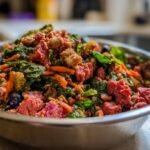
daily raw food portions for dogs: 5 key rules to avoid disaster
- Total Time: 15 minutes
- Yield: Varies by dog size
- Diet: Low Lactose
Description
Determine the right daily raw food portions for your dog to balance nutrition and support overall health.
Ingredients
- 70-80% muscle meat (e.g., chicken, beef, turkey)
- 10-15% organ meat (e.g., liver, kidney)
- 10-15% raw bones (e.g., ground chicken necks)
- 5-10% vegetables (e.g., spinach, carrots, broccoli)
- 5% fruits (e.g., apples, blueberries)
- 1–2 eggs per week
- Supplements (e.g., fish oil, calcium)
Instructions
- Consult your vet to confirm your dog’s weight and dietary needs.
- Calculate daily portion size: 2-3% of your dog’s body weight for adults, 5-8% for puppies.
- Select protein sources and adjust ratios based on your dog’s activity level and health.
- Chop or grind meats, organs, and bones to manageable sizes.
- Mix vegetables and fruits into the protein blend.
- Add eggs or supplements as needed.
- Store portions in airtight containers; thaw before serving.
Notes
- Avoid cooked bones—they splinter and pose risks.
- Introduce new proteins gradually to check for allergies.
- Monitor your dog’s weight and adjust portions if needed.
- Keep raw food refrigerated and handle with clean utensils.
- Prep Time: 15 minutes
- Cook Time: 0 minutes
- Category: Dog Food
- Method: Raw Feeding
- Cuisine: Pet Food
Nutrition
- Serving Size: Varies by dog weight
- Calories: Varies by ingredients
- Sugar: 0g
- Sodium: Varies
- Fat: Varies
- Saturated Fat: Varies
- Unsaturated Fat: Varies
- Trans Fat: 0g
- Carbohydrates: Varies
- Fiber: Varies
- Protein: Varies
- Cholesterol: Varies

